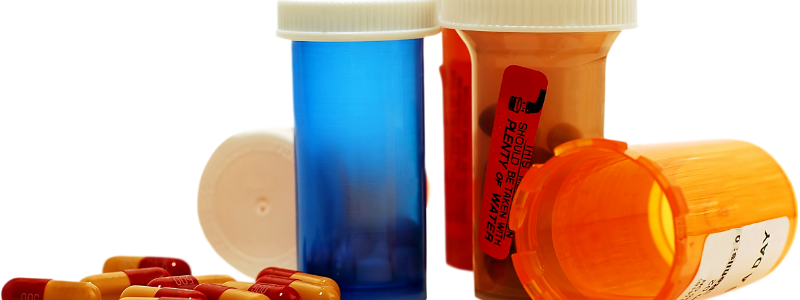The nation’s addiction crisis is one of the leading causes of death across various communities. As addiction health experts attempt to diagnose causes, prevention, and treatment, many are questioning what types of substances are mostly responsible. Studies, however, demonstrate that treatment should span multiple substances, as well as underlying mental health concerns. Spikes in overdose rates, after all, often involve more than one type of drug — also referred to as polysubstance use. What is polysubstance abuse and why is it important to consider treatment for co-occurring disorders?
In 2018 the Centers for Disease Control and Prevention (CDC) recorded that nearly 63% of opioid overdose deaths in the United States involved combinations of drug like cocaine, methamphetamine, or benzodiazepines. As growing rates of overdose deaths occurs, drug treatment specialists are recognizing the need to address polysubstance use as part of a comprehensive response to drug epidemics in America.
Dangers of Mixing Substances
What is polysubstance abuse and why is it so problematic?
Fentanyl, a highly potent synthetic opioid, has been identified as a driver of overdose deaths involving other opioids, benzodiazepines, alcohol, methamphetamine, and cocaine. Many treatment and health experts have warned of the dangers of mixing substances. Many have been directly instructed to avoid mixing alcohol with prescription medication, for example. What are the dangers of mixing substances, though?
Poly drug use, or using more than one type of drug, can intensify the effects of an individual drug. For example, drinking while taking prescription pain killers can make the effects of the pain killer more pronounced and can even carry the potential cardiac arrest or problems breathings. Combining substances can pose catastrophic damage even with one-time use.
Some of the side effects of combining drugs include:
- Brain damage
- Coma
- Heart problems
- Seizures
- Stomach bleeding
- Liver damage and failure
- Heatstroke
- Suppressed breathing
- Respiratory failure
Mixing drugs severely depletes the brain’s function and can produce sensations that lead to substance dependency much sooner. Brain chemical deregulation can spark behavioral issues that can create symptoms of depression and anxiety, or exacerbate these pre-existing mental illnesses.
The consequences of polysubstance abuse varies with different substance combinations. Drugs that are frequently abused together include:
- Alcohol and Marijuana
- Alcohol and Ecstacy
- Alcohol and Cocaine
- Alcohol and Codeine
- Amphetamines and Benzodiazepines
- Heroin and Cocaine (Speedball)
- Heroin and Fentanyl
- Xanax and Molly
While each drug carries its own effects, the dangers of using more than one substance whether knowing or unknowingly can be directly connected to the nation’s overdose rates that have spiked in recent years. That said, the risk of potentially dangerous side effects of polysubstance abuse depends on the amount and type of drugs being mixed.
What is Polysubstance Abuse and its Risks?
Polysubstance abuse is common among individuals who carry a propensity to self-medicate. People may even mix prescription drugs obtained from their doctor with alcohol or other drugs. Mixing prescription drugs can have serious side effects including fatal overdose. Adding alcohol or illicit drugs to the mix escalates the dangers of mixing prescriptions.
Polysubstance use is also common in illicit substance obtained from drug dealers and other illegal methods. One of the greatest risks street drugs carry, in fact, is that users are not always aware how the substance has been handled. In fact, drug traffickers are increasingly mixing substances like fentanyl and cocaine.
In 2018, according to the DEA, there was a 112% increase in samples of cocaine which contained fentanyl. What is polysubstance abuse and why is it helpful for drug dealers to cut their products with more lethal drugs? Experts have concluded:
Adding fentanyl to cocaine results in a more powerful “high” and a far more addictive substance. This helps traffickers build a larger base of reliable customers at the expense of people’s lives.
Unfortunately, cocaine users who have no experience with prescription or synthetic opioids face the greatest danger of overdose because they have no opioid tolerance. Nevertheless, there is already a demand for fentanyl-laced cocaine. The public bore witness to this trends with drug overdose deaths involving high-profiled celebrities like Philip Seymour Hoffman. Hoffman battled addiction and ultimately face relapse issues in 2012 after years of sobriety. In 2014, he overdosed and died of combined drug intoxication. A medical coroner found that the 46-year-old famous actor died from a lethal combination of heroin, cocaine, benzodiazepines and amphetamines.
Understanding Polysubstance Abuse
What is polysubstance abuse involving alcohol like? Studies have found one of the most commonly mixed substances found in overdose cases is alcohol. People drink to socialize, celebrate, and relax. Alcohol often has a strong effect on people—and throughout history, people have struggled to understand and manage alcohol’s power.
While drinking alcohol is itself not necessarily a short-term problem—drinking too much can cause a range of consequences, and increase your risk for a variety of problems. Further, mixing alcohol and other drugs can pose life-threatening effects. Understanding polysubstance abuse begins with uncovering individual alcohol and drug effects.
In 2011, a report released by the Substance Abuse and Mental Health Services Administration (SAMHSA) revealed that 56.3 percent of all the drug-related emergency room visits looked at were the result of polydrug use.
Many people may not realize that mixing alcohol with drugs is also considered to be polydrug use and easily one of the most common forms of this behavior. It can be as simple as smoking a cigarette and drinking a beer.
Polysubstance Abuse Mechanisms
The effects of drugs are quite variable and depend on the type of substance, amount, context of use, degree of psychopathology at baseline, as well as an individual’s experiences and expectations of the drug. In some cases, individual may use more than one drug in order to combat the effects of the first. For example, cocaine and alcohol users frequently state that cocaine provides a temporarily relief of alcohol overindulgence and allows the user to consume more alcohol in the same period of time.
What is happening in the body when more than one substance is used?
People generally think of overdose as the result of taking too much of a single drug. It’s actually more likely for people to overdose from polydrug use. There are two main reasons for this phenomenon. The first is mixing two or more drugs, usually of the same class of either stimulants or depressants.
This is especially dangerous with depressants like alcohol, opioids, and tranquilizers like benzodiazepines and barbiturates. These drugs depress the central nervous system, which controls essential functions like heartbeat and the respiratory system. Depressant overdose deaths happen because the victim’s breathing rate slows to the point that not enough oxygen can reach the brain, resulting in a dangerous condition called hypoxia. Without quick intervention, this causes rapid cell death in the brain, ending in brain damage or death.
Polysubstance Abuse & Addiction
In many cases, an individual may be addicted to more than one substance at a time. This poses extra challenges during treatment, because the patient will have more specialized needs. In particular, detox can be especially challenging and dangerous. Withdrawal symptoms from all substances may be present and exaggerated. It is critical that patients who are addicted to alcohol and other substances detox under the supervision of a professional because of the many serious and potentially fatal impacts that can occur.
Recognizing the Dangers
Abusing multiple drugs comes with a wide variety of dangers. There’s always the risk of overdose. When you use various drugs with the same effects, you may take too much. In the case of opioids and alcohol, for example, you might stop breathing and slip into a coma.
When you take drugs that increase your heart rate, you run the risk of experiencing a heart attack. Besides that, you may also see a rise in body temperature, which can lead to severe dehydration. If you don’t counteract it right away, your kidneys could suffer. Subsequently, you may deal with kidney failure.
Diagnosing Polysubstance Abuse
What is polysubstance abuse and what can loved ones do? Addiction itself is a difficult disease to treat. However, symptoms and signs usually become more evident over time.
Diagnosing polysubstance abuse may be difficult if the individual is only aware of one substance they are using. To be diagnosed with this condition, it will require meeting specific criteria. First, the individual must be using at least three substances over a fixed time period. Polysubstance abuse is not limited to illicit substances, but can also include products like nicotine and caffeine. Although the latter usually doesn’t appear in addiction contexts.
If more than three substances are used, the individual must exhibit a minimum of three symptoms within 12 months:
- They are losing control: Residually using drugs more often than planned.
- Inability to stop using: The individual refuses to cut down or discontinue using the drugs with no desire ever to quit.
- Higher tolerance: The individual needs higher doses to feel any effects of the drug, which may require them to use up to 50% more than what they initially used.
- Experiencing withdrawal: The individual having withdrawal symptoms when not being high or even taking the drugs to avoid withdrawal symptoms.
- Disengaging with activities: The individual will stop engaging in interests and activities and cutting down the amount of time they used to spend on other pursuits; this could include school, work, hobbies, and socializing.
- Time spent using: The individual finds themselves spending more time buying and using drugs and spending more time being high.
- Self-harm: The individual will continue to use even after being aware of the physical harm that it is caused to them.
It’s also possible for a person to have multiple addictions without necessarily having polysubstance addition. For example, individuals may be addicted to heroin, cocaine, and alcohol. This becomes an instance of multiple addictions, not a polysubstance addiction.
On the other hand, sometimes, a person doesn’t have just one “drug of choice.” They may use several different substances at different times. This addiction to any kind of high is called “polysubstance dependence,” and the term refers to people addicted to intoxication itself, with no particular drug of choice. It can be alcohol, marijuana, heroin, opioids, prescription medication or a combination of all of the above – the user wants anything that creates an intoxicated state. Officially, polysubstance dependence is defined as abusing three or more substances for a period of 12 months or more.
Treatment for Multiple Substance Dependencies
What is polysubstance abuse treatment like? There’s a good chance that you’ll struggle with intense withdrawal symptoms. Therefore, medical detoxification should be determine and, if needed, overseen by medically licensed professionals or doctors. Pharmaceutical support assists through medication assisted treatment options may also be used in combination with other treatment modalities.
Modalities might include:
- Dual diagnosis treatment for underlying mood disorders or other conditions that trigger substance abuse
- Cognitive-behavioral treatment that empowers you to develop adequate coping skills for stressors
- Dialectical behavior treatment, which focuses on dealing with emotions so they become manageable
- Trauma treatment program that encourages you to reprocess traumatic events from the past so you won’t experience subsequent triggers
- Sober housing as a way to practice recovery hands-on after program graduation for protection of early sobriety
Online Treatment for Multiple Addictions
Addiction is a disease that responds well to medical and clinical treatment. If you don’t get professional help, there’s a good chance that you’ll encounter a health emergency. In fact, it’s more than likely you or a loved one has already experienced an overdose due to polysubstance abuse. Receiving treatment can be an uphill battle.
Traditional treatment is becoming more widely available, but it also still poses many obstacles. For one, inpatient treatment can impose on a person’s employment and make it difficult or impossible for them to see to personal obligations. Online treatment through telehealth programs is growing in popularity since the 2020 world pandemic. Online polysubstance abuse treatment is now available through AspenRidge AspenRidge Virtual Care.
All of our programs are 100% virtual, providing access to more individuals seeking immediate help. Our highly experienced and certified staff members include psychiatrists, psychologists, addiction specialists, recovery advocates, and others interested in the treatment for polydrug use. For more information on treatment options, contact us today at 720-650-8055.







